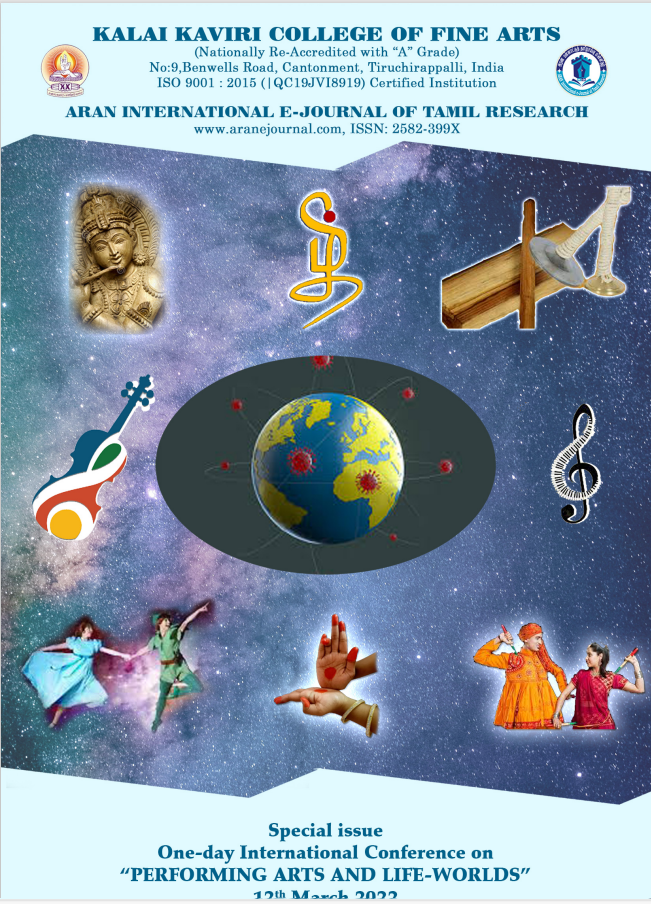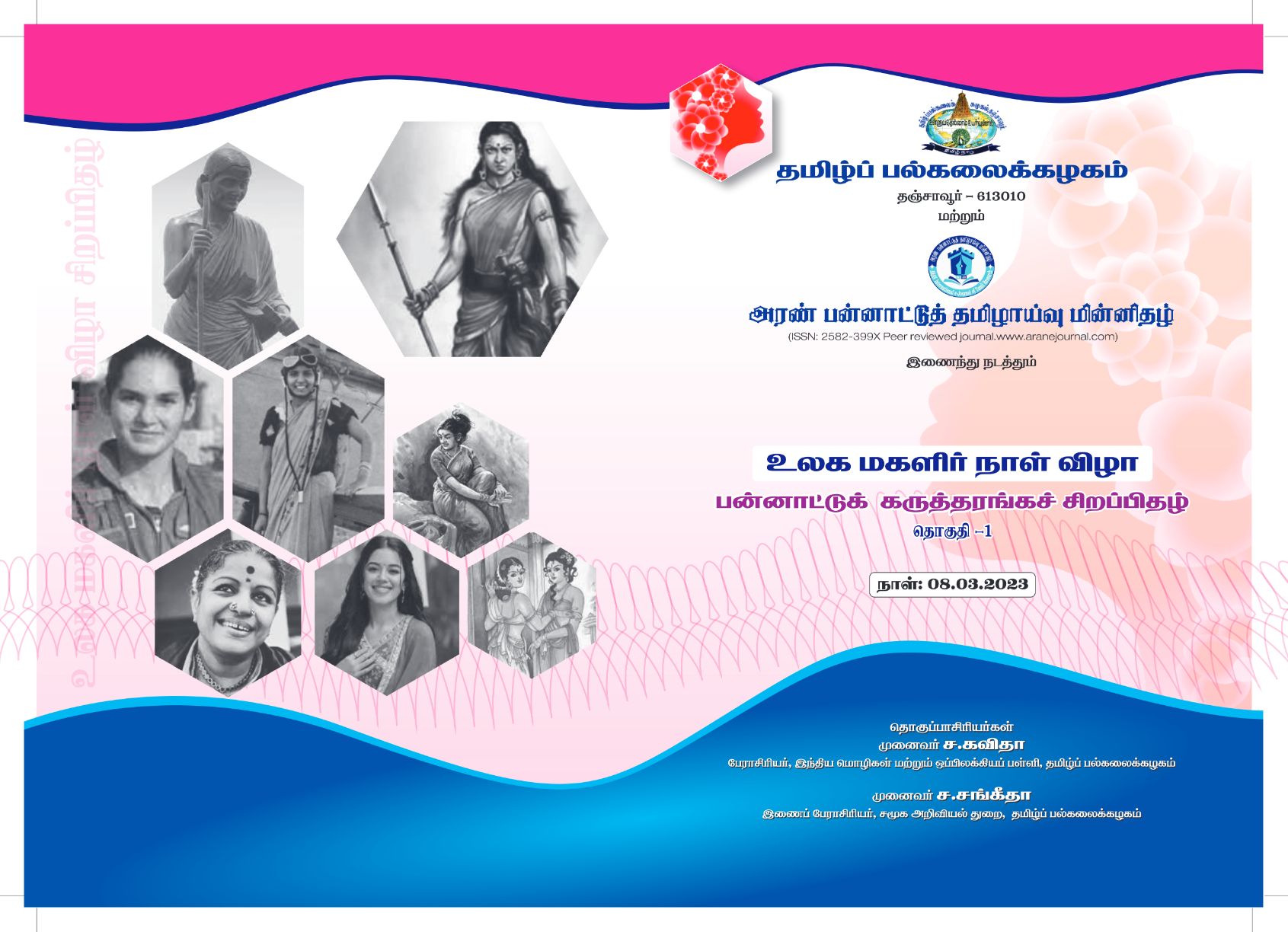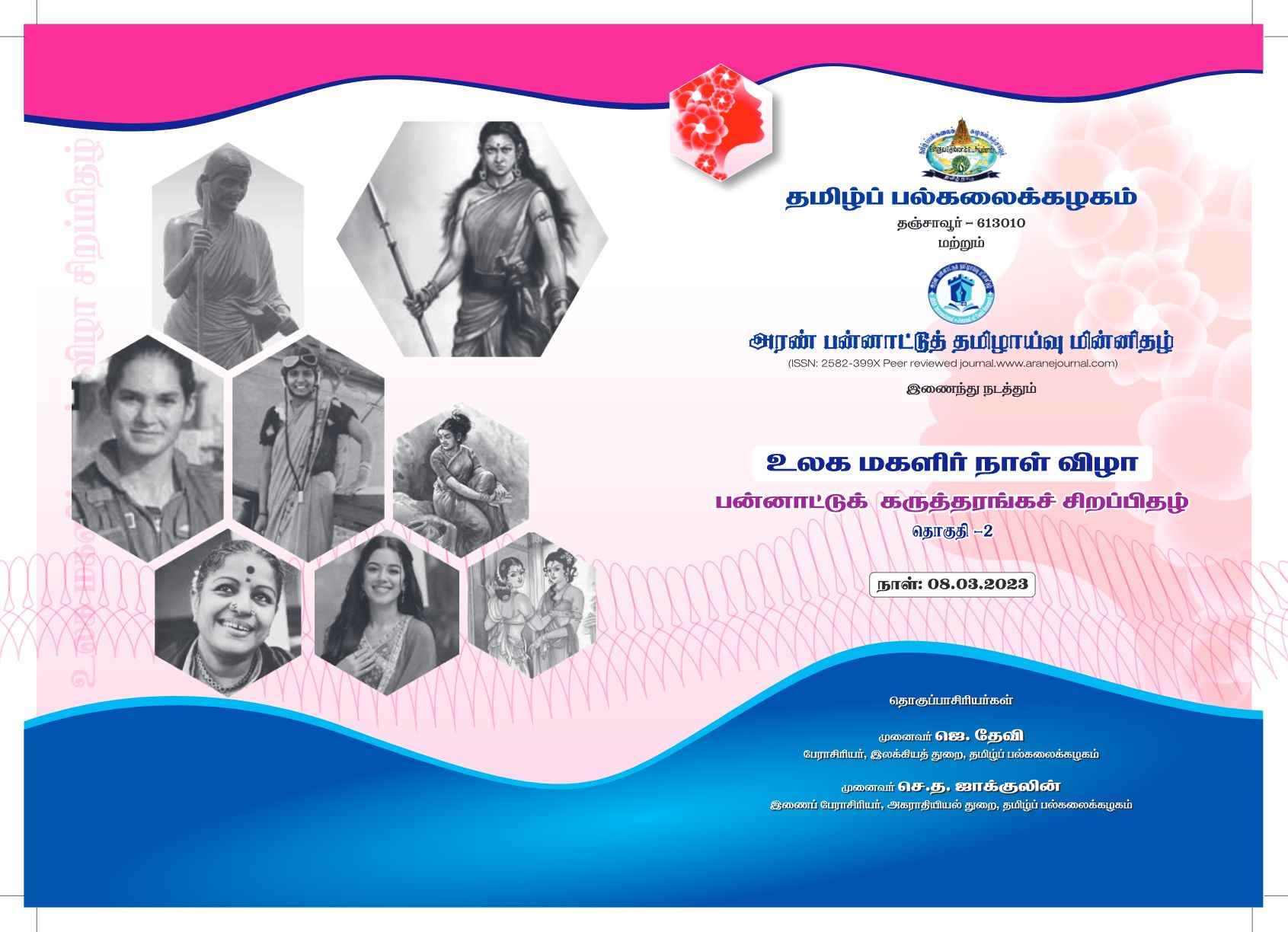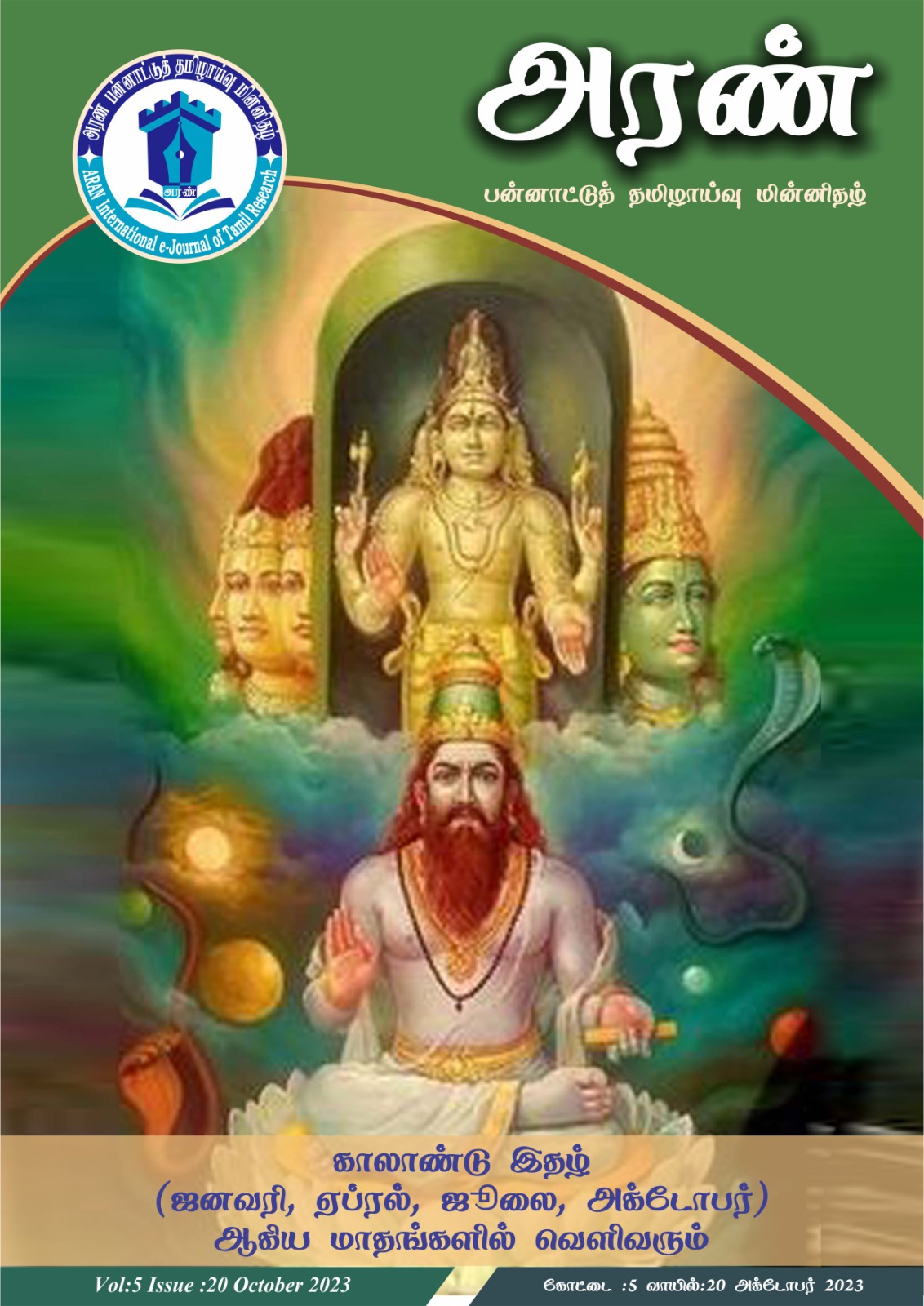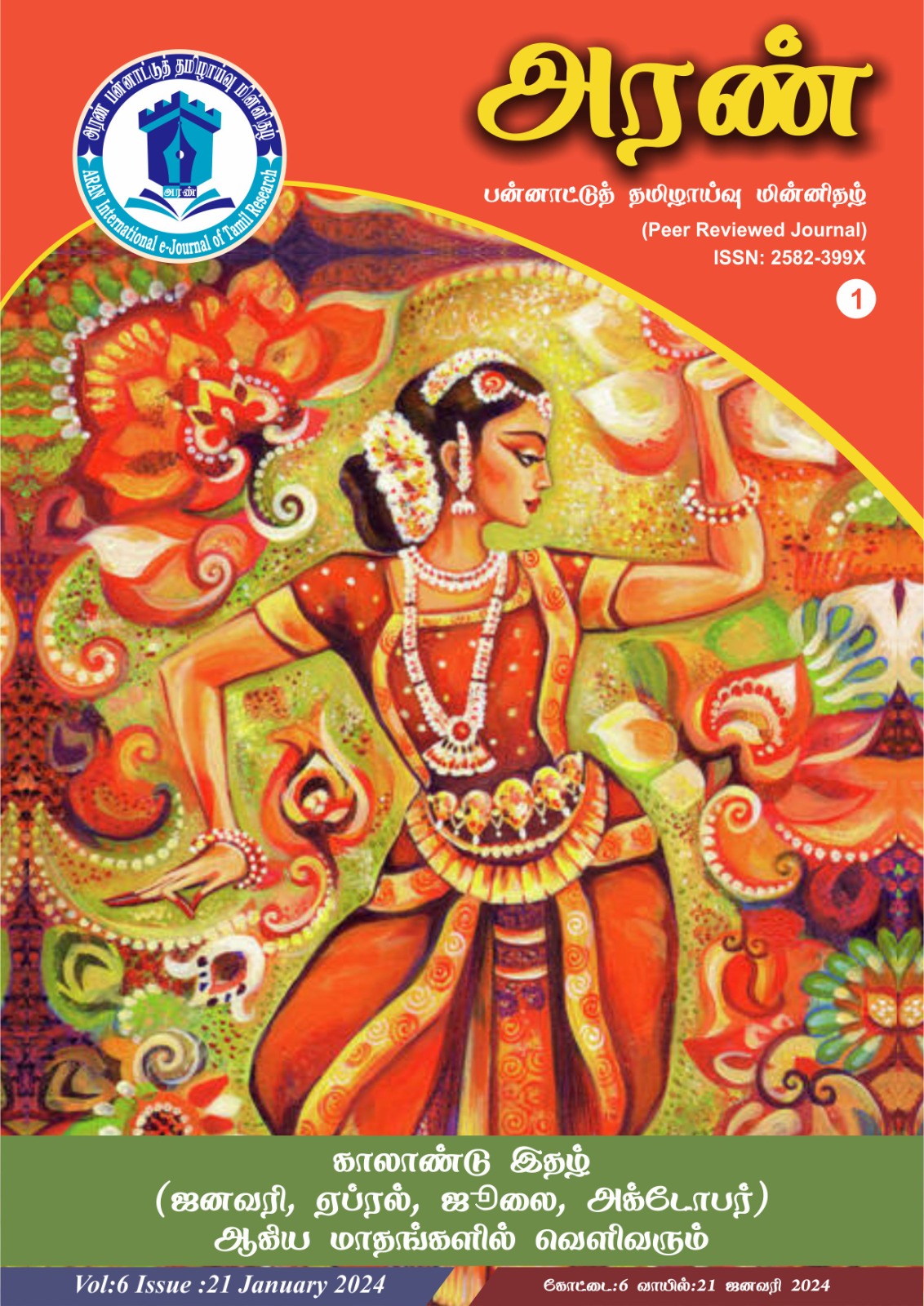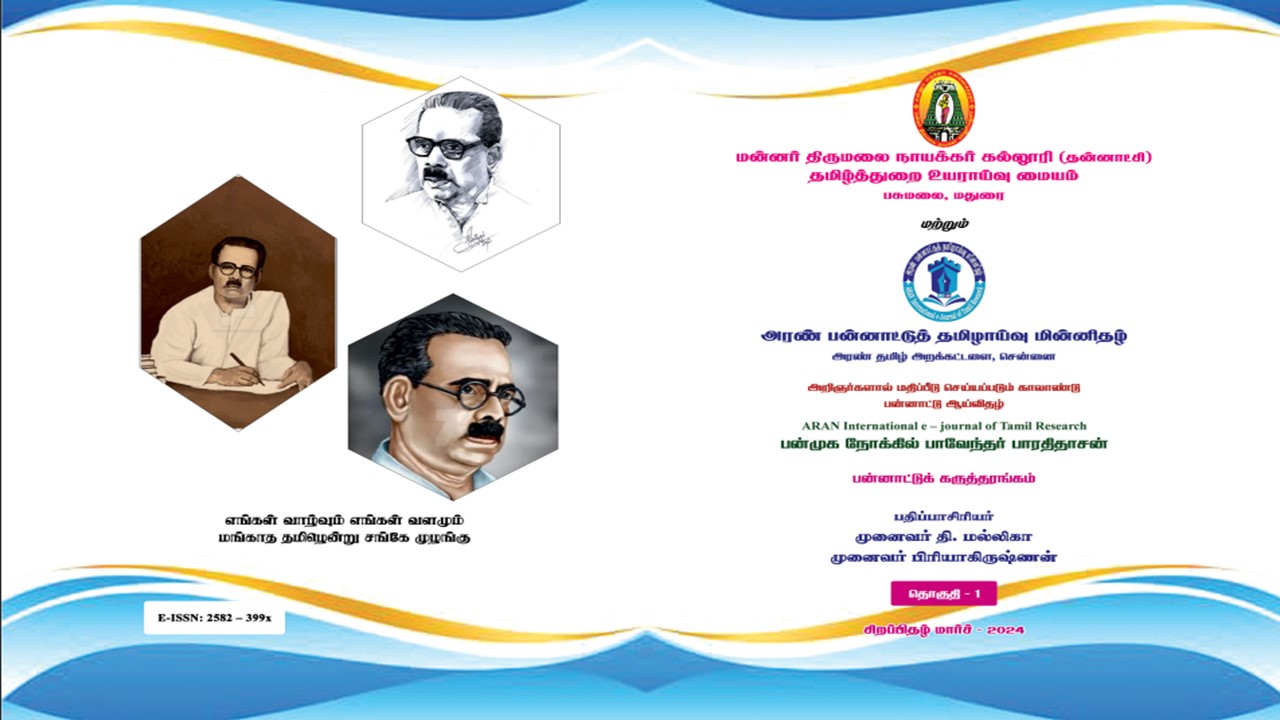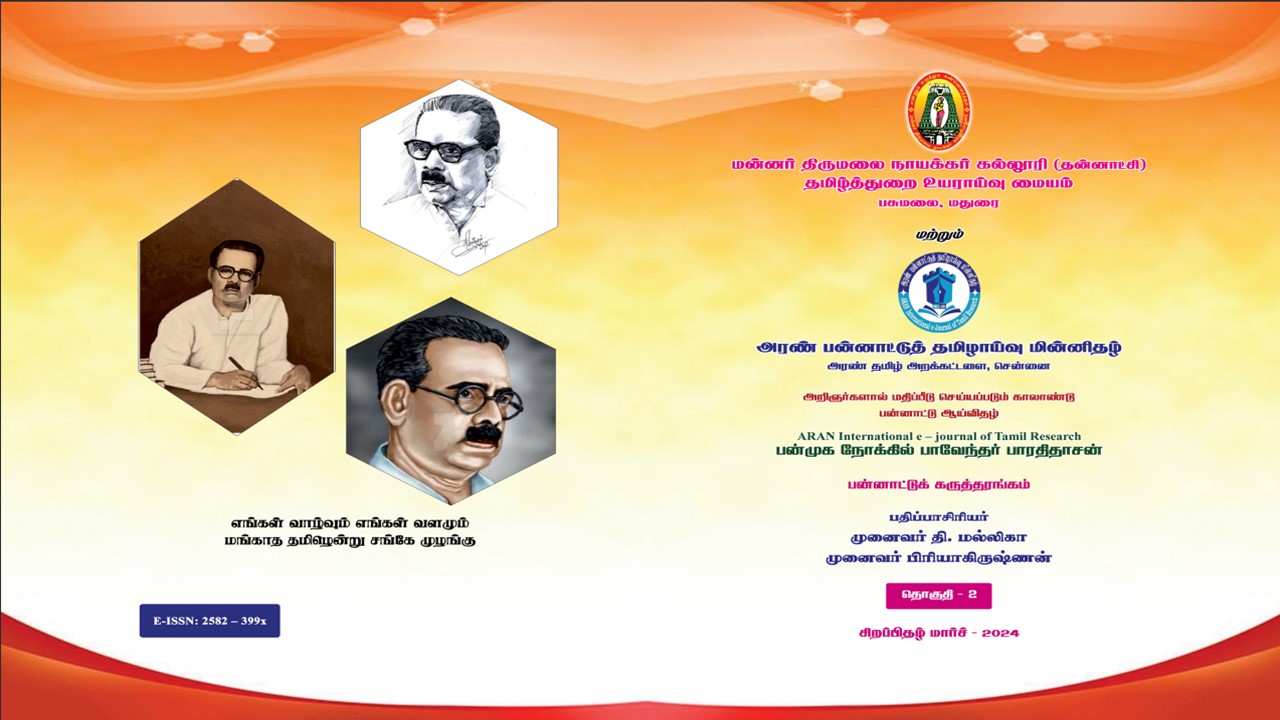Women Liberation: Reflections of Indian Press on Women in Dravidian and Leftist Movements in Tamilnadu, 1928-1947
Abstract
Indian Women fought with true spirit and undaunted courage and faced several tortures, exploitations and hardships to earn social and political freedom for Indians. They joined the Indian national movement belonged to educated and elite families, as well as those from the rural areas and form all walk of social life, all castes, religions and communities women of Madras Presidency especially from Tamil province were actively involved not only in the national movement but also in the social and communist movements in the virulent manner. The press and political literature which changed their attitude according to the needs of the time could develop them. The women folk started gaining importance in the social and communist movements in Tamilnadu.
Keywords:
Indian Press, Women Press, IPC, Cr.P.C., Self-Respect, ‘Kudiarasu’, ‘Viduthalai’, ‘Justice’, ‘aarath’, ‘Janasakthi’, Madar Sangam, Communist Party and ‘Periyar’ E.V.Ramasamy.
Introduction
Indian Women fought with true spirit and undaunted courage and faced several tortures, exploitations and hardships to earn social and political freedom for Indians. They joined the Indian national movement belonged to educated and elite families,as well as those from the rural areas and form all walk of social life, all castes, religions and communities women of Madras Presidency especially from Tamil province were actively involved not only in the national movement but also in the social and communist movements in the virulent manner. The press and political literature which changed their attitude according to the needs of the time could develop them. The women folk started gaining importance in the social and communist movements in Tamilnadu.
The Press and the Women in the Self-Respect Movement
The Self-Respect Movement acted in Tamil speaking areas of Madras Presidency against the Indian National Congress and the domination of Brahmins in all the spheres of the society. The movement was established by E.V.Ramasamy. Initially he was an energetic member of the Indian National Congress. Due to the differences of opinion with the congress leaders, he left the Congress party and started the Self-Respect Movement. Women liberation was one of the fundamental objectives of this movement.1Although it aimed at social reforms, it served as a training station for the women in political field. The movement propped up the Justice Party in the elections. In 1944, it came to be known as ‘Dravida Kazhagam’. In the cause of social change, the chairmanship of the political and social meetings were forcibly placed on the heads of the women cadres for quite a lot of times. The movement oriented papers such as Kudiyarasu, Viduthalai, Pakuttharivu and Revolt cared for the women liberation from their launch. They cultured the women in social, political and economicfields.
Political Participation of Women
The Male dominance in the politics was the main reason for the microscopic participation or non-participation of women in politics.2 So, the Self-Respect Movement gave equal opportunities to the women in political arena. Their papers gave importance to the women’s participation than of the men in order to induce the rest of the women society. The Diravidan covered the news about the conference of Unmai Naaduvor Sangam (Truth Lovers Association) in 1929 in Erode. The meeting was conducted by and for the women. Lakshmi Ammal, Chinnathayammal, Bangaru Ammal, and S.R.Kannammal took the leading role in conducting the meeting. The journal hailed the active participation of women and made a note that the meeting had evidenced the ability and determination of the women community.3 Giving emphasis to the women’s activities in the papers was the thriving technique followed by the Self-Respect movement to mobilize the women towards their goal. The Kudiyarasugave much importance to the efforts taken by MoovalurRamamirthamAmmal to bring hefty number of Devadasi women to the Chingleput Self-Respect Conference in February1929.4
The following instances evidenced that the women were given main concern in the Self-Respect Conferences and their papers. In May 1932, the Salem District Self- Respect conference was presided over by S. Neelavathi and the inaugural address was delivered by R. Annapooraniyammal. The Kudiyarasu covered their speeches extensively in order to motivate the women community.5 The later served as the Chair in the Adi-Dravida youth Conference in Sirkazhi in July 1935.6
The Tanjavur District Self-Respect conference was presided over by the women leader S. Kunjitham in June 1932. She delivered a rousing speech there.7In July 1933, she acted as the chairperson of the Thiruchirappalli District first Self- Respect Conference held in Srirangam.8 While attending the Self-Respect Conference at Kolar gold mines in June 1932, she was prohibited by the Order under section 144 of IPC for her fiery speech. The news regarding her prohibition was utilized by the Self-Respect press as a spur to the other women cadres.9Pudukottai Princely State Sengunthar Community First Conference was held on 27thMarch 1933. Movaloor Ramamirtham acted as its chair.10 S. Neelavathi presided over the Thanjavur District Self-Respect Conference in the year March 1933.11 In May 1933, she delivered the inaugural address in the North Arcot District First Self-Respect Conference.12 In 1935, and she presided over the Self-Respect Conference in Aruppukottai.13
State Level Self-Respect Conference was held at Madras on 26th and 27th December 1931. During the conference, E.V.Ramasamy went abroad. In his absence, Kunjitham took the leading role in conducting the conference successfully. She acted as the convener of the reception committee. Her works and speech were given priority in the columns of the Kudiyarasu.14The journal covered the news of women’s participation in large number under the heading ‘Women’s Liberal Enthusiasm’.
The Tamilnadu Women’s Conference was held on 11th November 1938 in Madras. This conference was chaired by Neelambikai Ammaiyar. In this conference, she gave E.V.Ramasamy, the evergreen title ‘Periyar’ (the great man). This incident got priority in the columns of the Kudiyarasu.15 Miranda Gajendiran was honoured provided with the chance of introducing the party flag in the Justice Party conference held at Thiruchirappalli on 29th September 1945.16 Through these incidents, the self-respect leaders and their press kicked off the efforts to break the general view that womanly nature, which barred women from political activities from time immemorial.17
The Self-Respect press respected the self-determination power of the women. The leading women cadres like Neelavathi and Maragathavalli left the movement for some reasons. Among the two, the former joined in the Indian National Congress, the opposite camp. The self-respect press didn’t blame her decision and thought it was an example for women’s self-determination, for which the movement worked for.18 Even after this incident, the Kudiyarasu republished her earlier articles several times. It conveyed its condolence to her while her father Kaliyaperumal passed away in 1938.19
In almost all the self-respect events, the women cadres were given priority and responsibilities. Their press didn’t fail to highlight the women’s participation. Giving responsibility in the events and due recognition in the columns became the crucial cause for the women’s participation in large numbers in the Dravidian movements at later period.
Anti-Hindi Agitation and the Women Press
Immediately after assuming the government in 1937, the Congress ministry announced the introduction of compulsory Hindi in the schools of Tamilnadu. The Tamil lovers vehemently opposed it for it would cause the down fall of Tamil. Being afraid of this, E.V.Ramasamy started his campaign against the introduction of compulsory Hindi. He and his movement utilized the usage of the print media for their effective campaign. He received support from almost all the parts of the non- Brahmin society irrespective of the sex. The agitation got momentum due to the participation of the women.20 The papers wrote about the women’s agitations to be attraction for themasses.
Opposing the intrusion of compulsory Hindi into Tamilnadu, a women’s conference was held in July 1938 at Madras. About three thousand women participated in it. The conference was chaired by Narayani Ammal. Dharmambal, a leading medical practitioner of Madras came with the resolution against compulsory Hindiin Madras Presidency. Pushpavathi Ammal, Meenambal, Pandithai Jalajatchi Amma and Meenambal Selvaraj delivered fiery speeches on Anti-Hindi agitation. The Kudiyarasu covered the events in the conference and published the speeches of the renowned women orators with the motive of inducing the women community against compulsory Hindi.21
The agitators organized All Parties’ Anti-Hindi Agitation meeting at Triplicane in Madras on 31st July 1938. Because of the press’ propaganda, 800 women from various areas participated in the conference. Among the orators, four were women. The Paper Viduthalai highlighted the event to capture the attention of the women community towards the goal irrespective of party politics.22
In this situation C. Rajagopalachari, the Chief Minister visited Erode on 28th July 1938. The women of Erode showed their opposition with black flags. The news was published in Viduthalai to encourage the anti-Hindi feelings in the society.23 The Kuidyarasu published the same with effective photographs for the same purpose.24 The same paper published the news of the agitation arranged by Dharmambal at Madras Mint Road. It was attended by the women in large numbers. They performed aarath25in front of the agitators to wish them. By publishing the news, the press added cultural flavour to the agitation.26
The Imprisonment of the Women with Babies
Enthused by the propaganda, the women were ready to go to jails. Even the mothers with kids went to jails with their kids. Comparatively they were less in numbers but enthusiastically they were as equal to men. The Kudiyarasu exposed the arrest and imprisonment of Movalur Ramamirtham Ammal, Dharmambal, Malarmugathammal, Pattu Ammal and Seethammal. Among them, Seethammal was arrested and imprisoned with her two children aged one and three. The paper published the photographs of the arrested women with the kids. This made a stir in the inner sentiments of the women.27 The journal published the particulars of the imprisoned women with photographs regularly. The news of the arrest of the women with children added fuel to the agitation. It also noted regularly the numerical particulars of arrested men, women and children. According to the Kudiyarasu, the total number of women arrested at the end of March 1939 was 54 and the number of children was20.28Among them some women were imprisoned for second time also.29
Because of the vigorous agitation, E.V.Ramasamy was arrested and imprisoned. In this situation, the Kudiyarasu wrote about the news of Narayani Ammal’s challenge to the government. She challenged the government, unless the government would release E.V.Ramasamy within one week, she would involve herself in demonstration in front of the Premier's house and would get imprisonment. As she challenged, she demonstrated in front of the Chief Minister’s house on 17th February 1939 and was imprisoned for six months.30 The exposure of this ‘challenge and response’ through the press stunned the public very much. It created the spontaneous sprit in the minds of the Tamil women.
T.S.S. Rajan, the then Minister of Madras criticized the protests of the women and remarked that the women came forward to be imprisoned with their children, in order to get milk at no cost for them. This statement created heat in the political and social fields. His statement commercialized the sacrifices of the women. The Kudiyarasu condemned it as misinterpreted and rotten. It asked him to withdraw his statement otherwise he should resign from the ministry.31 In praising the women who were imprisoned, the journal released a printed yearly calendar with the photographs of them. It also noted that the calendars sold out in no time.32
Because of the high spirit of the agitation, the government changed its policy and issued an order on 21st February 1940 that the Hindi would be taught as optional instead of compulsory.33 The participation of the women in the agitation was one the significant causes for its success. The propaganda of press served as the fundamental cause for their participation.
The Press and the Women in Leftist Movement
According to the Marxian ideology, the emancipation of women and their equality with men are impossible so long as women are excluded from socially productive work and restricted to house work, which is private,34 and the women have to participate in outdoor activities, binding them to house hold work alone is the greatest injustice.35 As per these lines of Marx, the Communist Party of India made efforts to impart political thoughts on women and bring them to the political field.
After the year 1935, the Communists in Tamilnadu organized the womenfolk and formed the ‘Madhar Sangas’(women associations). The women of this time began to sense the need for total social transformation. They understood the importance and significance of the Marxian ideology and they joined their hands with men folk to implement the Communist programme quite successfully. There was natural reluctance on the part of the women to allow their sons to undergo hardships like jail sentence. But this initial reluctance later turned into a feeling of pride when they saw their sons playing a great role for the upliftment of the society.36
Women came out daringly to speak at public places and this was seen in the second anniversary meeting of the Tramway Electric Supply Union held on 1st May 1938. That day, Subadra Ammal, a committee member of the Madras Socialist Party hoisted the flag and spoke on the history of labour movement. The Janasakthi, the official Tamil magazine of the Communist Party of India published the news and exclaimed her bravery and her impulsive speech.37
K.P. Janaki, the female stage performer attained the heights in the Tamilnadu Communist Party. She was drawn into the movement in 1936. Her husband Gurusamy was in the Congress Socialistic Party and she was influenced by his ideas. Gradually she came into the movement. In a meeting at Villapuram in Madurai, under the leadership of Jeevanantham, a prominent Communist leader of Tamilnadu, she spoke on the slavery of women. She stressed the need to rise up and identify oneself with the movement. The party magazine covered the news and gave more highlight to herspeech.38
She contributed a lot for the party. She collected party fund. Party classes were conducted at Madurai by her for the women comrades on Marxism and Socialism.39 The party magazine praised her, in order to recognize her activities regularly. The recognition made her work more for the party. She staged a drama ‘Kanthan Kaattum Vazhi” in many places to collect fund for the party.40
In November 1942, the Solidarity Weak was celebrated by the Communist Party. During the weak, 72 betel leaf selling woman from Pappanayakkanpalayam of Coimbatore District came forward to collect party fund in the streets of Coimbatore with hundis by breaking the social restrictions on the women. The party journal hailed the activities of these village women for the cause of the party.41 This incident proved how large number of women got engaged in the leftist movement as they began to understand the ideas of socialism. Kadayanallur Rathinasabapathi, a party cadre passed away in 1945. Party leader R.V. Ananthakrishnan went to console his mother. She said that her son worked for the communist ideology and that she was ready to give her other son for the party. Even amidst that grief, she gave hundred rupees for the party fund and said, “I am very much worried about you, the party members”. Janasakthi exposed the incident as the evidence of the emergence of the women as political force worth reckoning.42 In 1940s the women showed immense interest in the formation of women associations. The journal exposed the role played by the Tuticorin women in strengthening ‘Madhar Sangams’, as a time neededservice.43
In addition to that, the women party members were involved in several industrial strikes also. In a Textiles mill in Coimbatore, the women labourers demanded that their daily work should end at 5 pm instead of 6 pm. The management promised to consider the matter after some time. The women started strike on 22nd February 1946 for the immediate enforcement of their demand. The Communist workers offered them their support. The management declared lock out and the matter however got settled and the women were allowed to leave the factory by 5pm.44 The Janasakthi recorded the women’s strike as a role model to the rest.45
In 1946, one of the biggest strikes began in the South Indian Railway from 24th August to protest against the dismissal of several workers. The police terror was intensified at the railway workshops at Golden Rock in Thiruchirappalli. The women had gone out to collect funds for the strike when the police arrested them. The women refused to get into the police van and walked all the way to the police station, shouting the slogans all the way and exhorting the public to witness, how women who supported the strike, were arrested and insulted. For twenty nine days this strike, thousands of women fought daringly.46 Savage terror was let loose. The Janasakthi observed the bravery of women, including the mothers as old as sixty years of age.47
Coimbatore Textile workers struck work again on 11th November 1946. Two hundred workers including many women were picketing at the mill gates. The police brought in the backlogs in trucks. The police let loose the lathi charge. Rifle butts and bayonets were freely used. A reserve policeman threw down a women worker and fixed the rifle butt on her chest. She snatched the riffle from his hand. Another policeman standing close by shot her. The police killed another woman when she was helping men workers. As soon as the firing stopped, the workers carried the dead bodies of the two women on their head and marched towards the union office.48 A woman comrade ran to the head of the procession crying “shoot, shoot if you dare, drink more of the workers’ blood”, limped upto face the police. The party magazine exposed the women’s powerful role in the strike and their courageous spirit towards the goal.49
Female Students and the Leftist Movement
Knowing about the equal status enjoyed by women in the Soviet Union from the articles published in the Janasakthi, the female students felt that they had a role to play.50 A Students’ Conference was convened by Parvathi Kumaramangalam at Salem on 4th and 5th July, 1942. It was attended by over 500 female students.51 She wrote an article in the Janasakthi stating that their hands that rocked the cradle would hold the guns. She hailed the remarkable works of the Soviet women engineers in the industrial establishments.52 Thus, the girl students of Tamilnadu understood their role in the society and many of them actively participated in the students’ conferences and the conferences conducted by and for the women.
The participation of the girl students in political and social activities was acknowledged by the party journal. A team of doctors was sent to Bengal, at the time of Bengal famine in 1943. A lady doctor by name Devaki joined the team. The girl students of Madras Medical College actively participated in various public welfare activities. Their activities were highlighted in the party journal. At the Students’ Conference held in Calcutta in 1945, Devaki was elected as a member of the Student Committee.53 Slowly many other women students came forward to join the movement. Mention must be made of Rukmani of Annamalai University, Kamala Ramakrishnan and Vijayalakshmi of Madras Medical College. They were interested in reading party journal and leftistliterature.54
Conclusion
The major movements in Tamilnadu such as the Indian National Congress, the Self-Respect Movement and the Communist Party of India considered the women’s political participation as the source of their success and the triumph for their policies. To captivate the attention of the women, they started utilizing the media as much as possible. The women, who were neglected for a long time in the political arena, considered that their names were printed in the columns as the symbol of recognition. In the initial stages, the press too gave less importance to the womenfolk. But it changed its attitude and started giving importance to the womenfolk. They started thinking that giving importance to the women was the need of the time. The press and political literature which changed their attitude according to the needs of the time could develop them. The women community started gaining importance in politics and in columns. The womenfolk highly utilized the contributions of the press in developing their caliber and also their participation in the political movements in Tamilnadu.
References
- V.Venkatraman,“Women,Press and the Gandhian Satyagraha Movements in Tamilnadu,1920-1947”, SSRN e-jounal, July 2019, p. 4.
- TharaBai, Women Studies in India,,New Delhi, 2000, p.100.
- Diravidan, Madras, 20 May 1929.
- Kudiyarasu, Erode, 24 February 1929.
- Ibid., 22 May1932.
- Ibid., 21 July1935.
- Ibid., 25 June 1932.
- Ibid., 16 July1933.
- Ibid.,12 June1932.
- Ibid., 5 September 1933.
- Ibid., 9 April 1933.
- Ibid., 14 May1933.
- Ibid., 14 July1935.
- Ibid., 3 January 1932.
- Ibid.,20 November 1938.
- Ibid.,20 October 1945.
- TharaBai, op.cit.p.101.
- Kudiyarasu, Erode, 16 May 1937.
- Ibid.,30 January 1938.
- Mariam Dossel, Ruby Maloni, State Intervention and Popular Response Mumbai, 1999.p.223.
- Ibid.,31 July 1938.
- Viduthalai, Erode, 1 August 1938.
- Ibid.,29 July 1938.
- Kuidyarasu, Erode, 14 August 1938.
- Aarathi is used to welcome the great persons with the use of sacred things.
- Kuidyarasu, Erode, 18 September 1938.
- Ibid., 20 November 1938.
- Ibid., 26 March 1939.
- Ibid., 12 March 1939.
- Ibid.
- Ibid., 8 January 1939.
- Ibid., 29 January 1939.
- Palanidurai.G.,Poly Ethnicity in India and Canada, New Delhi,1997, p.50.
- Karl Marx and Frederick Engels, Free Capitalist Socio-Economic Formations, Moscow, 1979, p.440.and R. A. Sydie, Natural women, Cultured Men, Vancouver, 1987, p.100.
- MythliSivaraman, Karl Marx NootranduMalar, Madurai, 1983, p. 94.
- Indumathi.V.,The History of Communist Party in Tamilnadu, An unpublished Ph.D. Thesis, Madurai KamarajUniversity, Madurai, 1986, p. 283.
- Janasakthi,Madras, 21 May 1938.
- Ibid., 13 August 1938.
- Ibid., 9 August 1941.
- JanakiAmmal- M.R.V. Ninaivu Malar, Madurai, 1983, p.93.
- Janasakthi,Madras, 25 November 1942.
- Ibid.,19 September 1945.
- Ibid., 23 June 1945.
- Fortnightly Report, Second Half of February 1946.
- Janasakthi, Madras, 27 February 1946.
- RenuChakaravarthy, Communist in Indian Women Movements, New Delhi, 1980, pp.171-172.
- Janasakthi,Madras, 25 September 1946.
- RenuChakaravarthy, op.cit., pp. 171-172.
- Janasakthi,Madras, 20 November 1946.
- Ibid., 10 May 1944.
- Fortnightly Report, First Half of July 1942.
- Janasakthi,Madras, 7 November 1942.
- Ibid., 21 February 1945.
V.Venkatraman.,”Importation of Communist Ideology under British Raj: Writings of Communists at Crossroads in the Madras Presidency, 1925-1945”,Researchgate e-journalp.12-14

